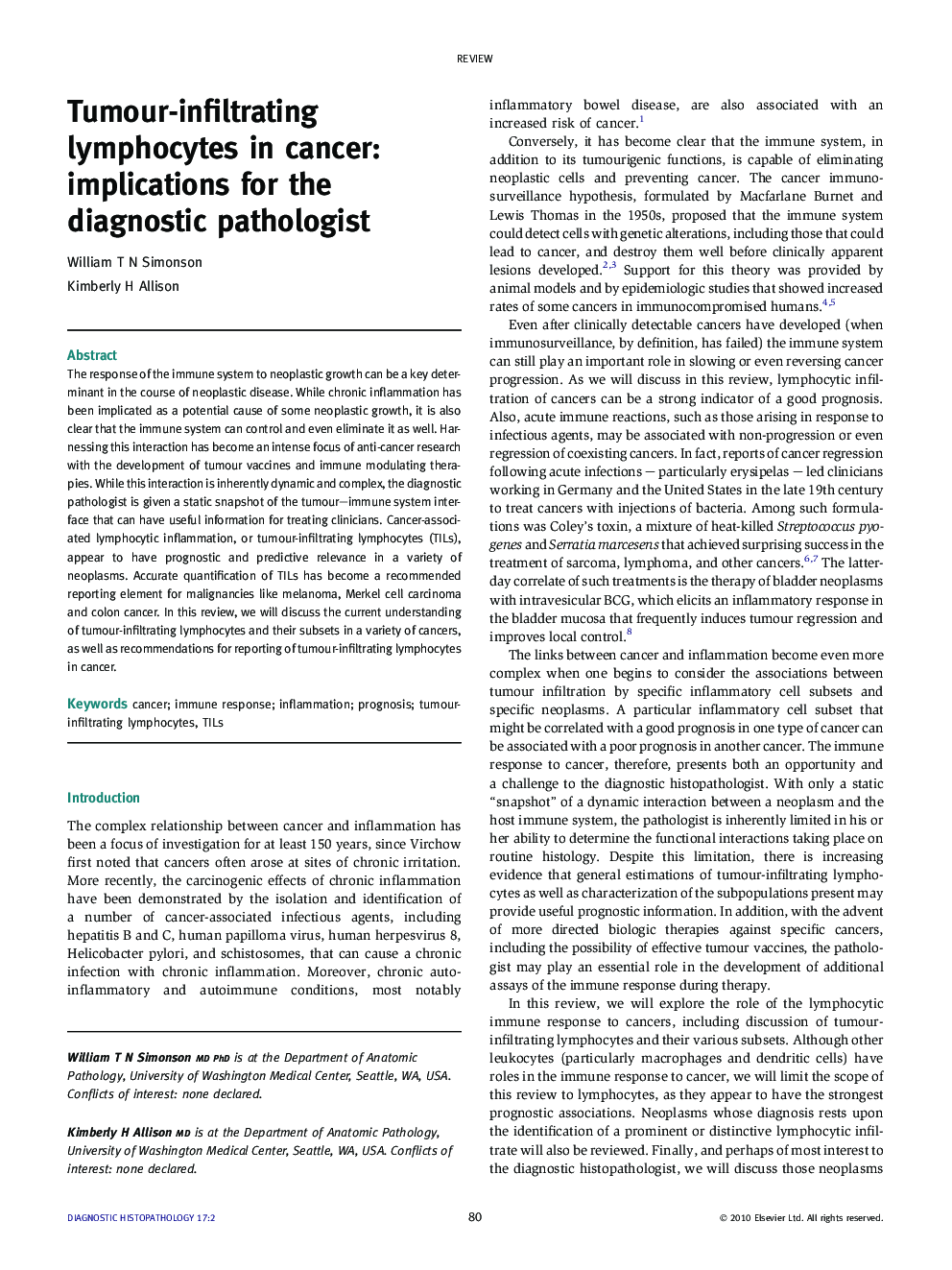| Article ID | Journal | Published Year | Pages | File Type |
|---|---|---|---|---|
| 4131430 | Diagnostic Histopathology | 2011 | 11 Pages |
The response of the immune system to neoplastic growth can be a key determinant in the course of neoplastic disease. While chronic inflammation has been implicated as a potential cause of some neoplastic growth, it is also clear that the immune system can control and even eliminate it as well. Harnessing this interaction has become an intense focus of anti-cancer research with the development of tumour vaccines and immune modulating therapies. While this interaction is inherently dynamic and complex, the diagnostic pathologist is given a static snapshot of the tumour–immune system interface that can have useful information for treating clinicians. Cancer-associated lymphocytic inflammation, or tumour-infiltrating lymphocytes (TILs), appear to have prognostic and predictive relevance in a variety of neoplasms. Accurate quantification of TILs has become a recommended reporting element for malignancies like melanoma, Merkel cell carcinoma and colon cancer. In this review, we will discuss the current understanding of tumour-infiltrating lymphocytes and their subsets in a variety of cancers, as well as recommendations for reporting of tumour-infiltrating lymphocytes in cancer.
